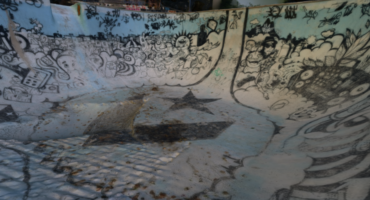Hop on board as we continue our journey Around the World in 80 Models! We began our itinerary at Sketchfab headquarters in New York and are working our way through Europe, Africa, Asia, Oceania, South America, and North America. To catch up on past destinations, check out the rest of the Around the World in 80 Models series.
This week we head to Colorado, where archaeologist Vince MacMillan tells us about two different but equally significant prehistoric vessels.
Gunnison River, Colorado: Archaic Basket
Hello, my name is Vince MacMillan. I am the lead archaeologist for Canyons of the Ancients National Monument (CANM) and the Anasazi Heritage Center (AHC), managed by the United States Bureau of Land Management (BLM) in Dolores, Colorado
We have initiated a multi-scale 3D modeling program to document both standing prehistoric Ancestral Puebloan architecture and rock art sites on CANM and to document museum objects from the AHC’s collection of 3.8 million artifacts. At this time, much of the work is done in-house by myself, but we are also building exciting partnerships with the University of Colorado – Denver’s Center of Preservation Research, Jagiellonian University’s Institute of Archaeology, the Maryland Institute College of Art, the Colorado State Historic Fund, and CyArk.
The models currently shown on SketchFab were done using close-range photogrammetry, specifically: Agisoft PhotoScan Professional, Nikon D5100, and both fixed and “fisheye” lenses. Computer processing was done on a Dell T5600 with two Intel Xeon 2.00 GHz processors and 64 Gb of RAM.
The Archaic basket is significant as one of the earliest organic objects ever found in Colorado, with radiocarbon dates of approximately 7,000 years before present. It was excavated from BLM lands near the Gunnison River in southwestern Colorado by archaeologists from Western Wyoming College.
Though quite small (ca. 10 cm diameter), the object appears similar in form to woven parching trays constructed by prehistoric hunter-gatherers to collect and roast very small plant seeds. Corroborating this conjectured use are small burn marks along the basket’s margins. The collection of small seeds, and in particular the value added to them nutritionally by roasting, was a significant development in modern human adaptation to the New World. Because of our ability to date the basket absolutely through radiocarbon assays, this object gives us a precise measurement on the development of this behavior within the longer timeline of prehistoric human cultural development in North America.
The digital 3D model of the Archaic basket was specifically constructed from 230 photographs of 16.2 megapixels each. Three separate models (interior, exterior, and edge) were constructed from these photos and then the models were merged. The original merged model contained ~35 million points in the dense point cloud and 2 million faces in the polygonal mesh. This was then iteratively decimated to a 200,000 face mesh for exporting and display on SketchFab. The model was scanned and modeled as part of the AHC’s recent exhibit “Weaving Stories: Basketry in the Southwest” which will be on display until February of 2017.
Cannonball Pueblo, Colorado: Anthro Bowl
The object titled “Anthro Bowl” is a ceramic Mancos Corrugated/Black-on-White bowl from the Pueblo II period (ca. AD 1000-1100). It was excavated from Cannonball Pueblo in what is now Canyons of the Ancients National Monument, Colorado, USA and is permanently housed at the AHC. The object is significant on many levels, both archaeologically, anthropologically, artistically, and historically.
Artistically and prehistorically, the object is unique as it combines construction and decoration techniques usually only seen individually, such as the corrugated exterior surface, the black-on-white interior anthropomorphic design, the smeared exterior coils, and the recurring theme of the number three. Furthermore, the portrait on the interior surface has significance as it appears to match elements of modern Zuni tribal origin stories as well as historic Zuni hair styles, perhaps providing a rare link between the prehistoric Native Americans who manufactured the bowl 1,000 years ago and the oral traditions of modern tribal members. Two prehistoric repair holes can be seen along the bowl’s surface, demonstrating that the object was well cared for by its original possessor. Finally, part of object’s significance derives from the history of its excavation, as it was recovered in 1908 by Sylvanus Morley. Morley, who went on to become one of the founders of Mayan archaeology, was then a graduate student working under the first Federal archaeological permit to be issued after passage of the 1906 Antiquities Act, which itself was one of the first laws protecting archaeological resources in the world.
The digital “Anthro Bowl” 3D model was specifically constructed from 173 photographs of 16.2 megapixels each. Three separate models (interior, exterior, and edge) were constructed from these photos and then the models were merged. The original merged model contained ~3 million points in the dense point cloud and 700,000 faces in the polygonal mesh. This was then decimated to a 150,000 face mesh for exporting and display on SketchFab.
To see more of Vince’s models here on Sketchfab, check out his profile!



